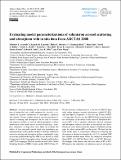| dc.contributor.author | Alvarado, Matthew J. | |
| dc.contributor.author | Lonsdale, Chantelle R. | |
| dc.contributor.author | Bian, Huisheng | |
| dc.contributor.author | Chin, Mian | |
| dc.contributor.author | Thornhill, Kenneth L. | |
| dc.contributor.author | Anderson, Bruce E. | |
| dc.contributor.author | Cubison, Michael J. | |
| dc.contributor.author | Jimenez, Jose L. | |
| dc.contributor.author | Kondo, Yutaka | |
| dc.contributor.author | Sahu, Lokesh K. | |
| dc.contributor.author | Dibb, Jack E. | |
| dc.contributor.author | Macintyre, Helen | |
| dc.contributor.author | Ridley, David Andrew | |
| dc.contributor.author | Heald, Colette L. | |
| dc.contributor.author | Wang, Chien | |
| dc.date.accessioned | 2017-06-28T18:31:01Z | |
| dc.date.available | 2017-06-28T18:31:01Z | |
| dc.date.issued | 2016-07 | |
| dc.date.submitted | 2016-06 | |
| dc.identifier.issn | 1680-7324 | |
| dc.identifier.issn | 1680-7316 | |
| dc.identifier.uri | http://hdl.handle.net/1721.1/110356 | |
| dc.description.abstract | Accurate modeling of the scattering and absorption of ultraviolet and visible radiation by aerosols is essential for accurate simulations of atmospheric chemistry and climate. Closure studies using in situ measurements of aerosol scattering and absorption can be used to evaluate and improve models of aerosol optical properties without interference from model errors in aerosol emissions, transport, chemistry, or deposition rates. Here we evaluate the ability of four externally mixed, fixed size distribution parameterizations used in global models to simulate submicron aerosol scattering and absorption at three wavelengths using in situ data gathered during the 2008 Arctic Research of the Composition of the Troposphere from Aircraft and Satellites (ARCTAS) campaign. The four models are the NASA Global Modeling Initiative (GMI) Combo model, GEOS-Chem v9-02, the baseline configuration of a version of GEOS-Chem with online radiative transfer calculations (called GC-RT), and the Optical Properties of Aerosol and Clouds (OPAC v3.1) package. We also use the ARCTAS data to perform the first evaluation of the ability of the Aerosol Simulation Program (ASP v2.1) to simulate submicron aerosol scattering and absorption when in situ data on the aerosol size distribution are used, and examine the impact of different mixing rules for black carbon (BC) on the results. We find that the GMI model tends to overestimate submicron scattering and absorption at shorter wavelengths by 10–23 %, and that GMI has smaller absolute mean biases for submicron absorption than OPAC v3.1, GEOS-Chem v9-02, or GC-RT. However, the changes to the density and refractive index of BC in GC-RT improve the simulation of submicron aerosol absorption at all wavelengths relative to GEOS-Chem v9-02. Adding a variable size distribution, as in ASP v2.1, improves model performance for scattering but not for absorption, likely due to the assumption in ASP v2.1 that BC is present at a constant mass fraction throughout the aerosol size distribution. Using a core-shell mixing rule in ASP overestimates aerosol absorption, especially for the fresh biomass burning aerosol measured in ARCTAS-B, suggesting the need for modeling the time-varying mixing states of aerosols in future versions of ASP. | en_US |
| dc.description.sponsorship | United States. National Aeronautics and Space Administration (NN14AP38G) | en_US |
| dc.description.sponsorship | United States. National Aeronautics and Space Administration (NNX11AN72G) | en_US |
| dc.language.iso | en_US | |
| dc.publisher | Copernicus GmbH | en_US |
| dc.relation.isversionof | http://dx.doi.org/10.5194/acp-16-9435-2016 | en_US |
| dc.rights | Creative Commons Attribution 3.0 Unported license | en_US |
| dc.rights.uri | http://creativecommons.org/licenses/by/3.0/ | en_US |
| dc.source | Copernicus Publications | en_US |
| dc.title | Evaluating model parameterizations of submicron aerosol scattering and absorption with in situ data from ARCTAS 2008 | en_US |
| dc.type | Article | en_US |
| dc.identifier.citation | Alvarado, Matthew J.; Lonsdale, Chantelle R.; Macintyre, Helen L.; Bian, Huisheng; Chin, Mian; Ridley, David A.; Heald, Colette L. et al. “Evaluating Model Parameterizations of Submicron Aerosol Scattering and Absorption with in Situ Data from ARCTAS 2008.” Atmospheric Chemistry and Physics 16, 14 (July 2016): 9435–9455 © 2016 Author(s) | en_US |
| dc.contributor.department | Massachusetts Institute of Technology. Center for Global Change Science | en_US |
| dc.contributor.department | Massachusetts Institute of Technology. Department of Civil and Environmental Engineering | en_US |
| dc.contributor.department | Massachusetts Institute of Technology. Department of Earth, Atmospheric, and Planetary Sciences | en_US |
| dc.contributor.mitauthor | Macintyre, Helen | |
| dc.contributor.mitauthor | Ridley, David Andrew | |
| dc.contributor.mitauthor | Heald, Colette L. | |
| dc.contributor.mitauthor | Wang, Chien | |
| dc.relation.journal | Atmospheric Chemistry and Physics | en_US |
| dc.eprint.version | Final published version | en_US |
| dc.type.uri | http://purl.org/eprint/type/JournalArticle | en_US |
| eprint.status | http://purl.org/eprint/status/PeerReviewed | en_US |
| dspace.orderedauthors | Alvarado, Matthew J.; Lonsdale, Chantelle R.; Macintyre, Helen L.; Bian, Huisheng; Chin, Mian; Ridley, David A.; Heald, Colette L.; Thornhill, Kenneth L.; Anderson, Bruce E.; Cubison, Michael J.; Jimenez, Jose L.; Kondo, Yutaka; Sahu, Lokesh K.; Dibb, Jack E.; Wang, Chien | en_US |
| dspace.embargo.terms | N | en_US |
| dc.identifier.orcid | https://orcid.org/0000-0003-3890-0197 | |
| dc.identifier.orcid | https://orcid.org/0000-0003-2894-5738 | |
| dc.identifier.orcid | https://orcid.org/0000-0002-3979-4747 | |
| mit.license | PUBLISHER_CC | en_US |
